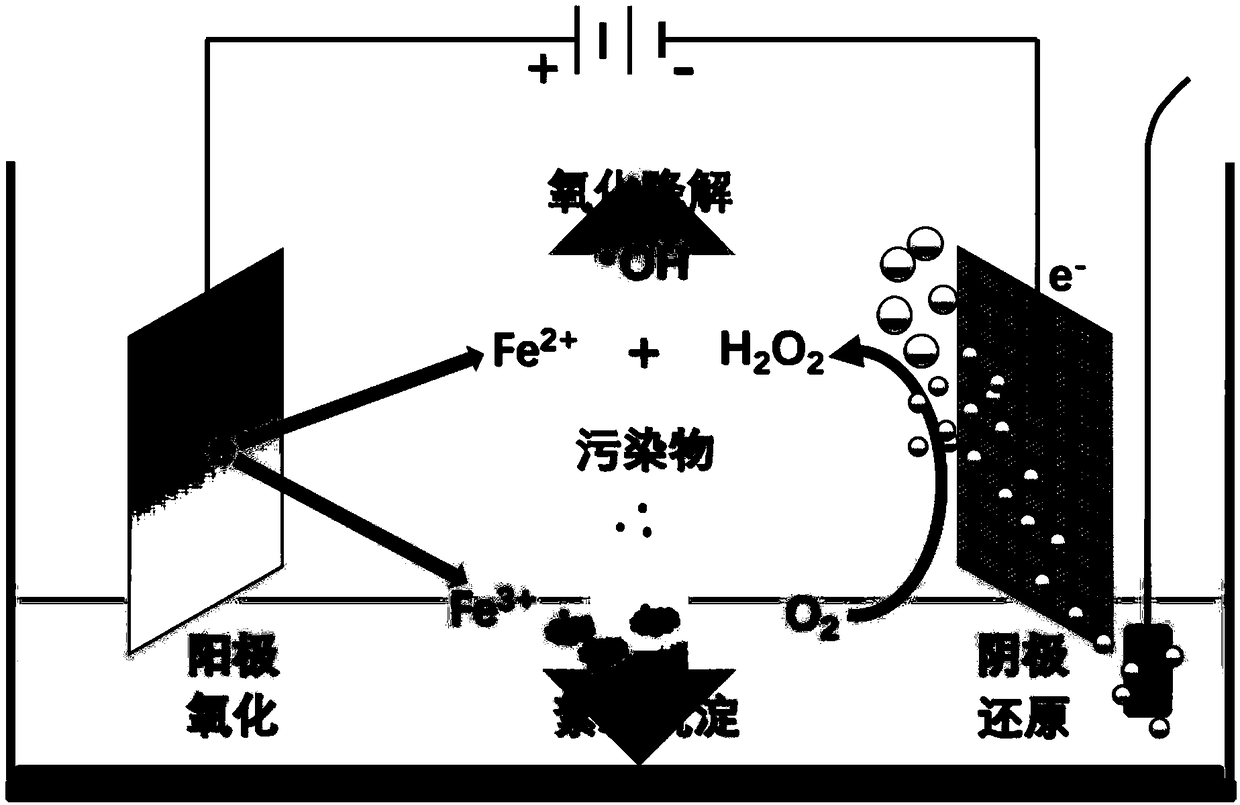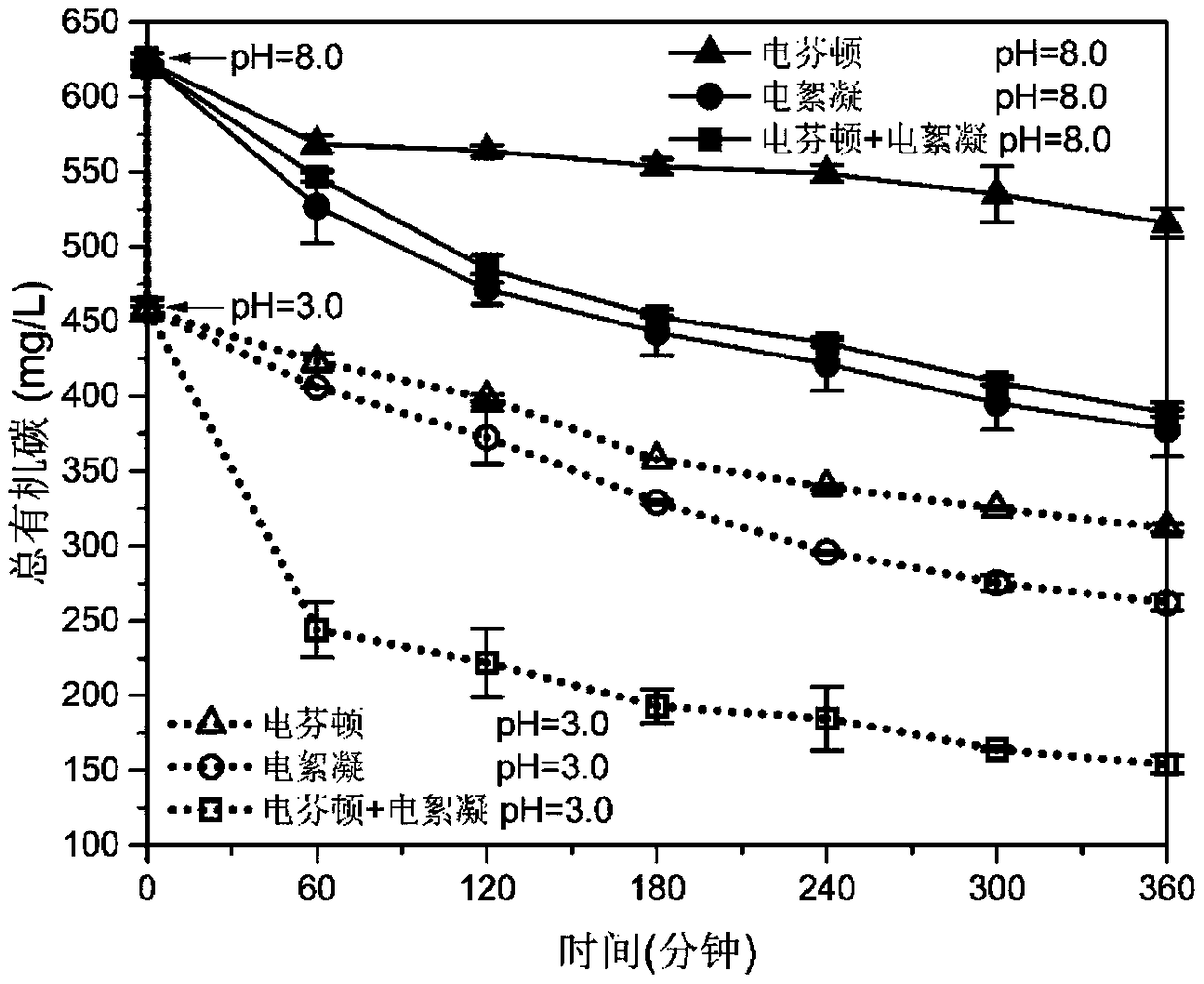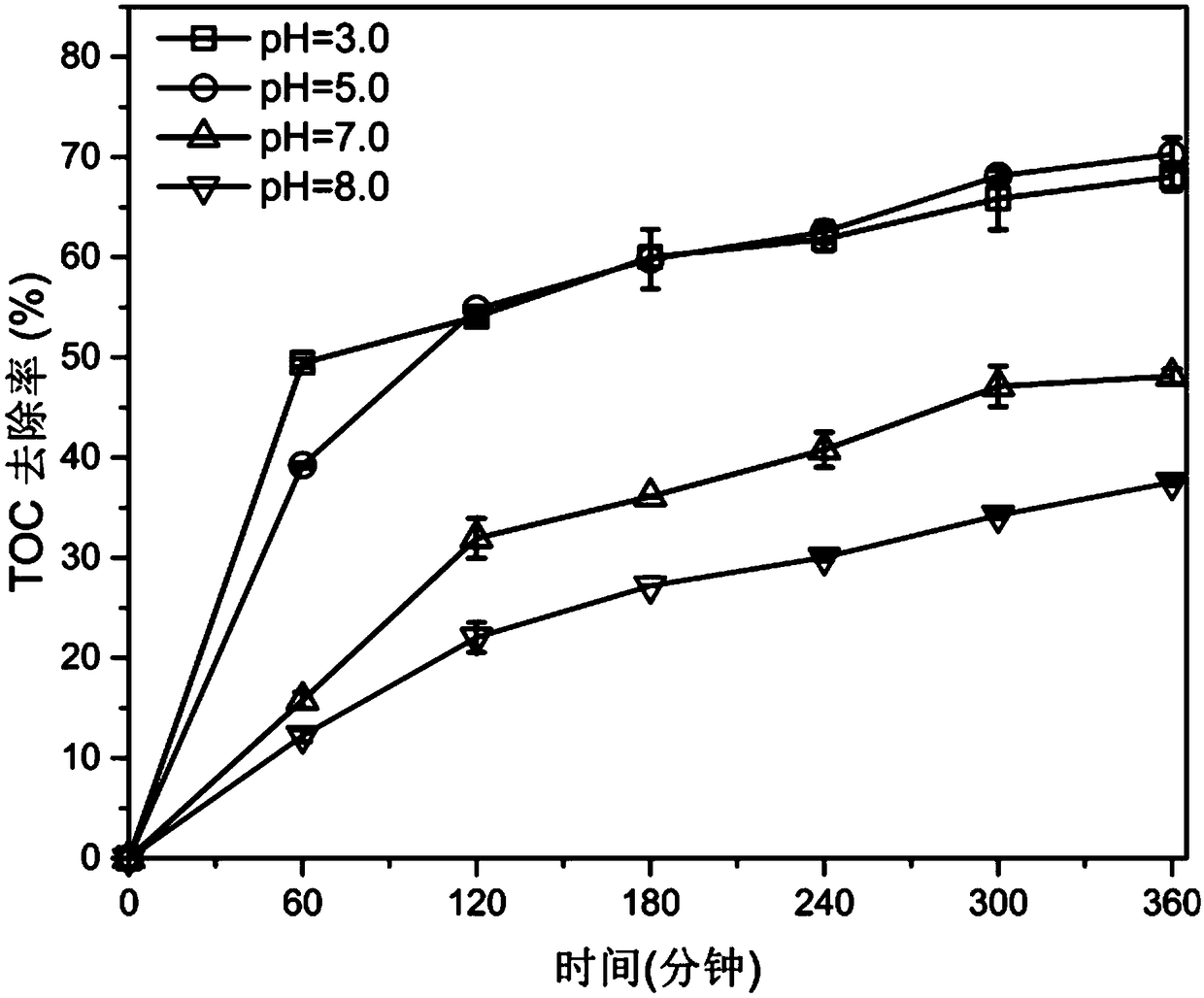Method for treating landfill leachate on basis of electro-Fenton and electroflocculation coupling
A technology of landfill leachate and electroflocculation, which is applied in special compound water treatment, water/sewage treatment, chemical instruments and methods, etc., can solve the problems of membrane pollution, difficulty in removing organic matter and heavy metals at the same time, and secondary pollution of concentrated liquid, etc. achieve high efficiency
- Summary
- Abstract
- Description
- Claims
- Application Information
AI Technical Summary
Problems solved by technology
Method used
Image
Examples
Embodiment 1
[0034] Landfill leachate volume: 200mL
[0035] Anode: High-purity iron sheet (5cm×4cm×1mm)
[0036] Cathode: modified graphite felt (5cm×4cm×3mm)
[0037] Oxygen flow rate: 100mL / min
[0038] Current intensity: 100mA
[0039] Processing time: 360min
[0040] Reaction temperature: 30±2℃
[0041] Initial pH of untreated landfill leachate: 8.0±0.1
[0042] Initial TOC of untreated landfill leachate: 623±5mg / L
[0043] Depend on figure 2It can be seen that when the initial pH is 8.0, the removal of total organic carbon by electro-Fenton coupled electrocoagulation and pure electro-flocculation is equivalent, and is better than electro-Fenton; The removal of organic carbon was much higher than that of electrocoagulation alone and electro-fenton alone. Adjusting the initial pH to 3.0 by acidification treatment, the soluble TOC decreased by 26.5% to 458±4 mg L –1 . This is because landfill leachate contains a variety of refractory biodegradable organic substances, such as ...
Embodiment 2
[0045] Landfill leachate volume: 200mL
[0046] Anode: High-purity iron sheet (5cm×4cm×1mm)
[0047] Cathode: modified graphite felt (5cm×4cm×3mm)
[0048] Oxygen flow rate: 100mL / min
[0049] Current intensity: 100mA
[0050] Processing time: 360min
[0051] Reaction temperature: 30±2℃
[0052] Adjust the pH of landfill leachate to: 3.0, 5.0, 7.0, 8.0
[0053] Depend on image 3 with Figure 4 It can be seen that when the initial pH is 3.0-5.0, the removal rate of TOC remains at a high level; when the pH is greater than 5.0, the removal rate of TOC decreases obviously with the increase of pH. This is mainly because the generation of hydroxyl radicals is favorable when the initial pH is low, and when the pH is too high, Fe 2+ Easy to generate Fe(OH) 3 Loss of catalytic effect, H 2 o 2 is also easily decomposed into H 2 O and O 2 , leading to a significant reduction in the generation of hydroxyl radicals, thereby reducing the removal rate of TOC. Due to the differ...
Embodiment 3
[0055] Landfill leachate volume: 200mL
[0056] Anode: High-purity iron sheet (5cm×4cm×1mm)
[0057] Cathode: modified graphite felt (5cm×4cm×3mm)
[0058] Oxygen flow rate: 100mL / min
[0059] Current intensity: 100mA
[0060] Processing time: 360min
[0061] Reaction temperature: 30±2℃
[0062] The initial landfill leachate pH: 5.0
[0063] Depend on Figure 5 It can be seen that after electrocoagulation coupled with electro-Fenton treatment, the fluorescence intensity in each region gradually decreased. After 360 minutes of treatment, the overall fluorescence intensity decreased significantly, and the characteristic fluorescence peaks in several regions basically disappeared. Depend on Image 6 It can be seen that the content of fulvic acids (region III) and humus-like substances (region V) in the original landfill leachate reverse osmosis concentrate is relatively high, and the content of aromatic protein substances (region I) that is easy to be degraded by microorga...
PUM
| Property | Measurement | Unit |
|---|---|---|
| Current intensity | aaaaa | aaaaa |
Abstract
Description
Claims
Application Information
 Login to View More
Login to View More - R&D
- Intellectual Property
- Life Sciences
- Materials
- Tech Scout
- Unparalleled Data Quality
- Higher Quality Content
- 60% Fewer Hallucinations
Browse by: Latest US Patents, China's latest patents, Technical Efficacy Thesaurus, Application Domain, Technology Topic, Popular Technical Reports.
© 2025 PatSnap. All rights reserved.Legal|Privacy policy|Modern Slavery Act Transparency Statement|Sitemap|About US| Contact US: help@patsnap.com



